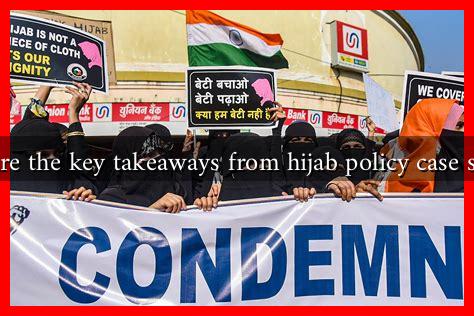-
Table of Contents
What are the Key Takeaways from Hijab Policy Case Studies?
The hijab, a traditional headscarf worn by many Muslim women, has become a focal point of debate in various countries regarding religious freedom, gender rights, and cultural identity. Case studies from different regions provide valuable insights into the implications of hijab policies on society, individual rights, and community dynamics. This article explores key takeaways from these case studies, highlighting the complexities surrounding hijab policies.
The Global Landscape of Hijab Policies
Hijab policies vary significantly across the globe, influenced by cultural, political, and religious contexts. Some countries embrace the hijab as a symbol of identity and freedom, while others impose restrictions, viewing it as a potential threat to secularism or national identity. Here are some notable examples:
- France: Known for its strict secularism, France has banned the wearing of hijabs in public schools since 2004. This policy has sparked debates about religious freedom and the rights of Muslim women.
- Turkey: Historically, Turkey enforced a ban on hijabs in public institutions, reflecting its secularist policies. However, in recent years, there has been a shift towards acceptance, allowing women to wear hijabs in public offices and universities.
- Iran: In contrast, Iran mandates the wearing of hijabs in public, viewing it as a religious obligation. This policy has led to significant resistance and protests from women advocating for personal freedom.
Case Studies: Impacts on Women and Society
Examining specific case studies reveals the multifaceted impacts of hijab policies on women and society. Here are some key findings:
1. Empowerment vs. Oppression
In some contexts, the hijab is seen as a form of empowerment, allowing women to express their identity and beliefs. For instance, a study conducted by the Pew Research Center found that many Muslim women in countries like Indonesia and Malaysia view the hijab as a personal choice that enhances their dignity and self-respect.
Conversely, in countries with restrictive policies, women often feel oppressed. In France, many Muslim women report feeling marginalized and discriminated against due to the hijab ban, which can lead to social isolation and economic disadvantages.
2. Social Cohesion and Division
Hijab policies can either foster social cohesion or exacerbate divisions within society. In multicultural societies, such as Canada, the acceptance of hijabs has been linked to greater social harmony and inclusivity. A report by the CBC highlighted that communities that embrace diversity tend to experience lower levels of discrimination and higher levels of mutual respect.
In contrast, countries with stringent hijab laws often see increased tensions between different cultural groups. For example, the hijab ban in France has led to protests and heightened Islamophobia, creating an environment of distrust and division.
3. Legal and Political Ramifications
Hijab policies also have significant legal and political implications. In many cases, these policies are challenged in courts, leading to landmark rulings that shape the discourse around religious freedom. For instance:
- The European Court of Justice ruled in 2021 that companies could prohibit employees from wearing visible religious symbols, including hijabs, in the workplace, raising concerns about discrimination.
- In Turkey, the lifting of the hijab ban in public institutions has been seen as a political move to consolidate power among conservative factions, impacting the secular fabric of the nation.
Conclusion: Key Takeaways
The case studies surrounding hijab policies reveal a complex interplay of empowerment, oppression, social cohesion, and legal ramifications. Key takeaways include:
- Hijab policies can significantly impact women’s rights and personal freedoms, with varying perceptions of empowerment and oppression.
- Social cohesion is often enhanced in societies that embrace diversity and inclusivity, while restrictive policies can lead to division and discrimination.
- Legal challenges surrounding hijab policies continue to shape the discourse on religious freedom and individual rights, highlighting the need for balanced approaches that respect cultural identities.
Ultimately, understanding the implications of hijab policies requires a nuanced approach that considers the voices of women affected by these laws, fostering dialogue and promoting respect for diverse cultural expressions.


